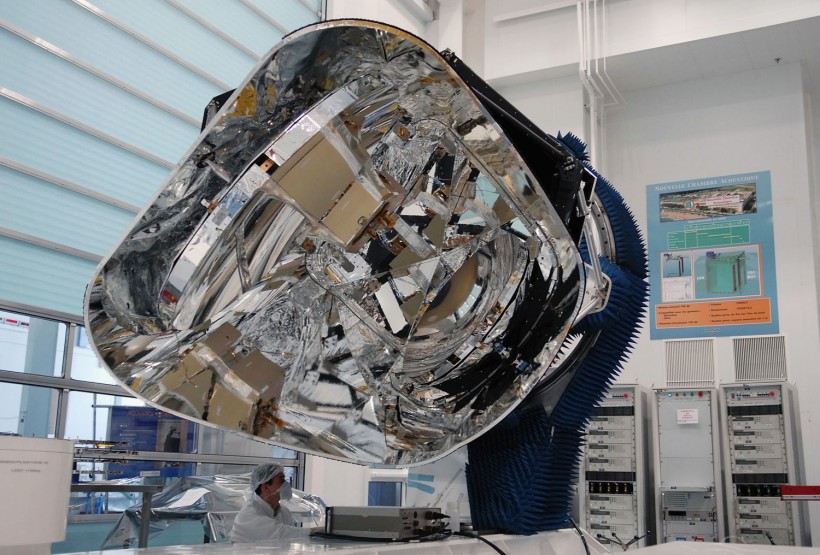An international team of scientists found a galactic shipyard 11 billion light-years beyond Earth.
Experts believe there is a "protocluster" of galaxies on its way to becoming a galactic supercluster.
The discovery of this supercluster may lead to a better understanding of how galaxy clusters, the most massive structures in the universe, are put together.

CANNES, FRANCE - FEBRUARY 1: In this handout image supplied by the European Space Agency (ESA), The inside of the Planck satellite, for the study of 'dark matter' and relic radiation from the 'Big Bang', is pictured on display at the Alcatel Alenia Space (AAS) facilities on February 1, 2007 in Cannes, France. Planck is ESA's 'time machine'. It will look back at the dawn of time, close to the Big Bang, and will observe the most ancient radiation in the Universe, known as the 'cosmic microwave background'. Planck will analyse it for clues about how clusters of galaxies and even individual galaxies formed. It is due to be launched by the end of July 2008.
Galaxy Shipyard From A Galaxy Protocluster
According to Tech Explorist, the scientists ultimately recognized that some of what they saw was unconnected to the protocluster and came from the galaxy.
Mari Polletta of the National Institute for Astrophysics in Milan said that the total star formation rate remained high, at least 1,000 solar masses per year, even after scientists removed the unnecessary data.
On the other hand, the Milky Way produces around one solar mass every year.
The protocluster detailed in the current research was first identified as part of an all-sky scan by the European Space Agency's (ESA) Planck observatory. It showed up strongly in the far-infrared area of the electromagnetic spectrum.
Finders Keepers: How They Found A Shipyard
Researchers discovered a protocluster known as PHz G237.01+42.50, or G237, while sifting through a sample of more than 2,000 structures that might be on their way to becoming clusters.
The results were promising, but more observations with additional telescopes were necessary to establish its identity.
ALSO READ: NASA Hubble Space Telescope Shares Spooky Spiderweb Just In Time For Halloween
Brenda Frye, an associate professor of astronomy at the University of Arizona's Steward Observatory, said per Phys.org that they still know very little about protoclusters. She explained that these celestial objects are so weak, too faint to be detected by optical light.
The scientists then determined that some of the signals came from galaxies unconnected to the protocluster. Still, even when the experts deleted the irrelevant signals, the total star formation rate remained high, Poletta claims, at least a thousand solar masses each year. The Milky Way, by comparison, creates around one solar mass each year.
According to Frye, the photographs they have today are of a successful galaxy shipyard that is functioning at high efficiency to construct galaxies and the stars within them and have a more sustainable energy supply.
ESA Planck Space Telescope
The European Space Agency said the Planck spacecraft serves as a service module and a payload module. The service module carried equipment for power production and cooling, attitude control, data management, communications, and the thermal components of the scientific instruments.
The payload module consisted of the telescope, the optical bench, and the sections of the instruments were required to be cooled, such as the sensitive detector units, as well as the cooling systems.
Planck rotated once every minute, its spin axis pointing toward the Sun.
Because its telescope was tilted away from the spin axis, it produced a large circle in the sky that moved as the Earth and Planck telescope orbited around the Sun.
Engineers mounted the Planck telescope and instruments on top of an octagonal service module.
They made a barrier around the telescope and instruments to hide them from stray light.
Furthermore, experts used three 'V-grooves' between the service module and the telescope structure to prevent the payload from being heated by thermal radiation from the comparatively warm service module.
RELATED ARTICLE: 5 Exoplanets That Will Leave You Horrified and Grateful for Habitable Earth
Check out more news and information on Space in Science Times.














